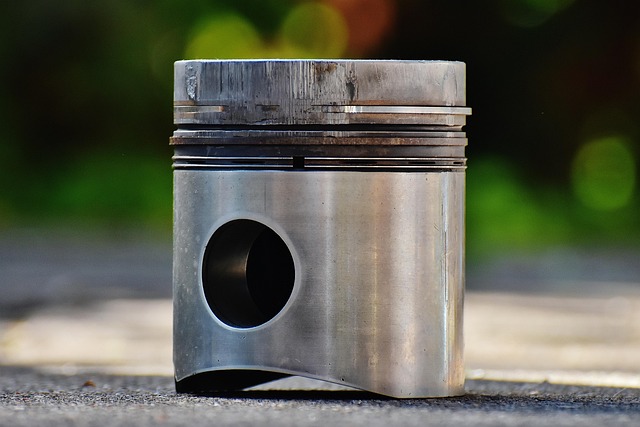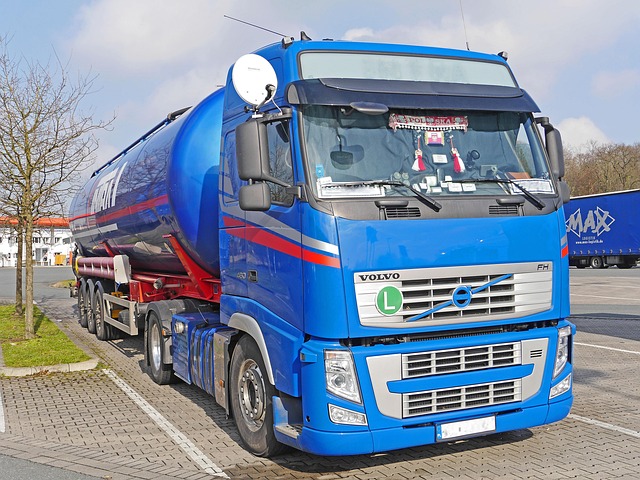Looking to register your car in California? This comprehensive guide walks you through every step, from understanding the process to securing your vehicle’s registration. We’ll break down gathering essential documents, navigating the DMV VIN verification process, submitting your application, and paying fees. By following these clear instructions, you’ll be on your way to becoming a California vehicle owner in no time.
- Understanding the California Car Registration Process
- Gather Required Documents for Registration
- Perform DMV VIN Verification Step-by-Step
- Submit Your Application and Pay Fees
- Receive and Maintain Your Vehicle Registration Documents
Understanding the California Car Registration Process

In California, registering your car involves several crucial steps, beginning with a thorough understanding of the process and requirements set by the Department of Motor Vehicles (DMV). The first key step is to ensure that your vehicle meets all safety and emissions standards, which can be verified through a mobile vin inspection or using an approved mobile vin verifier. This verification is essential for DMV acceptance. Once your car passes this initial check, you’ll need to gather necessary documents, including proof of insurance, title, and identification.
The actual registration process typically involves visiting a local DMV office where you’ll submit the required paperwork and pay associated fees. A unique Vehicle Identification Number (VIN) verification is conducted during this process, ensuring that your vehicle’s details match the information on record. This step is vital to maintain California’s robust motor vehicle records and ensure public safety on its roads.
Gather Required Documents for Registration

Before registering your car in California, you’ll need to gather several essential documents and undergo a crucial step known as DMV VIN verification. This process ensures that your vehicle’s identification number (VIN) is accurate and reported, which is vital for both safety and legal compliance. Start by collecting your vehicle’s registration from the previous state or country where it was registered. You’ll also need to provide proof of insurance, often in the form of an insurance card or policy document. Additionally, a valid driver’s license and proof of residency, such as a utility bill or lease agreement, are mandatory.
For convenience, many Californians opt for mobile VIN verification services that allow them to complete this step from the comfort of their homes. These mobile vin verifiers streamline the process by sending an inspector to your location to conduct a thorough inspection and confirmation of your vehicle’s details. This modern approach not only saves time but also ensures accuracy in what is known as the VIN inspection.
Perform DMV VIN Verification Step-by-Step

Performing a DMV VIN verification is a crucial step in registering your car in California. Here’s a step-by-step guide to help you navigate this process:
1. Gather Necessary Documents: Before heading to the DMV, ensure you have all required documents, including your vehicle’s title, registration documents from the previous state (if applicable), proof of insurance, and valid driver’s license.
2. Check Eligibility: Verify that your vehicle meets California’s safety and emissions standards. You can do this by checking with a certified mobile vin inspection or using an online tool provided by the DMV. This step ensures your car is eligible for registration.
3. Complete Application: Fill out the appropriate DMV forms, which can be found on their official website. Provide detailed information about your vehicle, including its make, model, year, and unique VIN (Vehicle Identification Number).
4. Submit for Verification: Take your application, along with all required documents, to a local California DMV office. An examiner will conduct a thorough vin inspection to confirm the vehicle’s identity and history, ensuring there are no outstanding issues or liens.
5. Wait for Processing: Once submitted, the DMV will process your application. This may involve cross-referencing data with national databases to ensure the vehicle is not stolen or has any undisclosed damage.
6. Receive Registration: If your vehicle passes all verifications, you’ll be issued a California registration certificate and license plate.
Submit Your Application and Pay Fees

After completing your vehicle’s registration form, it’s time to submit your application and fees to the DMV. This crucial step involves a thorough process that begins with verifying the Vehicle Identification Number (VIN) to ensure the car’s authenticity and history. The DMV will cross-reference this unique identifier with their records to confirm ownership and any potential liens or recalls associated with the vehicle. This is where a mobile VIN inspection or verification service can prove invaluable, allowing for quick and accurate checks without having to visit a DMV office.
You’ll need to pay relevant fees, which may vary depending on your specific circumstances, such as whether you’re registering a new or used car, changing ownership, or updating registration details. Once your application is approved, the DMV will issue a registration certificate, which is typically valid for one year and needs to be renewed before it expires to avoid penalties.
Receive and Maintain Your Vehicle Registration Documents

After submitting your application for car registration at the California DMV, you’ll receive important documents that confirm your vehicle’s registration status. These include a Vehicle Registration Certificate (also known as the registration card) and a Unique Identification Number (VIN) verification report. The VIN is a 17-character identifier unique to each vehicle—it’s like a fingerprint for your car. It’s crucial to keep these documents secure and up-to-date.
One way to maintain accurate records is by utilizing a mobile VIN verifier, which allows you to quickly and easily verify your vehicle’s information from the comfort of your home or on the go. This convenient service ensures that your VIN inspection remains current, as well as providing instant access to vital details about your car in case of an emergency or when selling it in the future.
Registering a car in California involves several steps, but with the right preparation, it can be a straightforward process. After gathering all necessary documents and completing the DMV VIN verification, submitting your application and paying the required fees is the final step towards securing your vehicle’s registration. Remember to keep your registration documents up-to-date and stored safely for future reference.
